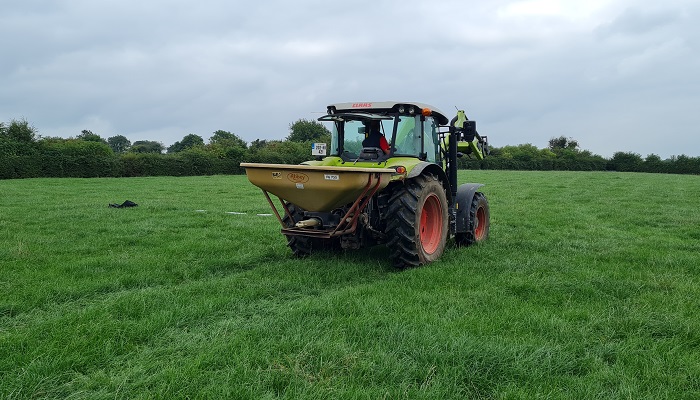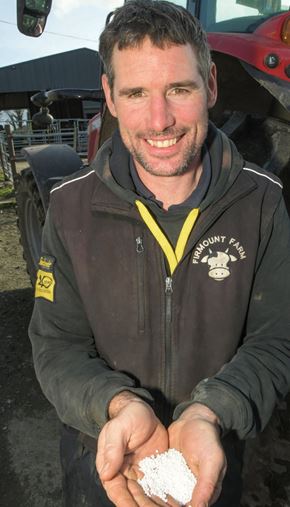30 April 2023
Why you must use less bagged nitrogen

Farmers are being tasked with reducing greenhouse gas (GHG) emissions, but what steps can be taken at farm level to achieve this?
In this article, Siobhan Kavanagh, Teagasc Signpost Programme, and Seamus Nolan, Teagasc Dairy Advisor, detail how the steps taken on your farm affect the total GHG emissions calculated for agriculture as a sector by considering what counts towards agricultural GHG emissions and the proven GHG reduction technologies available to farmers.
How are GHG emissions from agriculture calculated?
The National Inventory, overseen by the Environmental Protection Agency (EPA), accounts for the total GHG emissions released within the borders of Ireland during any given year. The EPA reports national GHG emissions for all sectors, one of which is agriculture. It’s complicated by the fact that different industries produce different greenhouse gases. So, in contrast to other sectors which are focused on the GHG carbon dioxide, the agricultural sector concentrates on methane and nitrous oxide (N2O). These two gases together contribute over 90% of total agricultural greenhouse gas emissions. Figure 1 shows that livestock and chemical nitrogen (N) fertiliser are the main sources of GHG emissions. There is a major focus on reducing our reliance on chemical N fertiliser because we have a very robust suite of tools (LESS, protected urea, clover swards, etc) to replace it without compromising yield.
Figure 1: Greenhouse gas emission sources from the agricultural sector (EPA, 2022).

What are the main strategies to reduce emissions from nitrogen fertiliser?
1. Get soil fertility right
Moving from soil pH 5.5 to 6.3 can make up to 70kg N per ha per year available to the crop, as well as reducing N2O emissions per kg of N applied. Target Index 3 for P and K.
2. Apply slurry using LESS between February and May
Slurry nitrogen fertiliser replacement value can be increased (and ammonia emissions reduced) by between 25% and 50% through using dribble bar or trailing shoe technology.
3. Use clover or multispecies swards
Clover can fix 80-120kg N per ha per year, depending on underlying soil fertility and sward management. Multispecies swards also offer extra benefits in terms of drought resistance and animal health.
4. Include legumes such as beans in a tillage rotation
Grow over-winter cover crops to reduce N leaching; and incorporate organic manures.
5. Replace CAN and urea with protected urea
For the chemical N used on the farm, replace CAN and urea with protected urea. Protected urea is 30% cheaper than CAN/urea, delivers the same grass yield and can be used throughout the growing season within the regulated spreading period. Most importantly, it reduces GHG emissions by 71%.
What is meant by enabling actions?
Enabling actions are actions that a farmer can take which allow him/her to reduce the quantity of chemical N used on the farm, while maintaining yield. Enabling actions include liming, making better use of slurry and incorporating clover into grassland swards.

Patrick O’Neill, a dairy farmer from Co. Longford, was able to save over €17,000 by reducing his use of bagged fertiliser in 2022. Read how this was achieved here.
How are the enabling actions accounted for?
For the enabling actions (liming, LESS, clover, etc) to reduce GHG emissions, chemical N fertiliser application must be decreased by the amount of N that each measure saves; otherwise there is little or no GHG saving. And you, the farmer, are losing out as there is no cost saving from applying lime, using LESS or incorporating clover, etc. The National Inventory does not measure clover incorporation levels (remember that the National Inventory picks up the benefit of clover in reduced fertiliser usage). It does measure lime application, which actually counts as a small increase in GHG emissions, but the savings from the reduced N fertiliser application due to liming are much greater.
In short, if chemical N doesn’t decrease, agriculture won’t get the credit for it in the inventory and you don’t get the benefit in your pocket.
This article first appeared in the March/April edition of Today’s Farm. For more information on the Signpost Programme and farmers can adapt to reduce their GHG emissions, click here.
